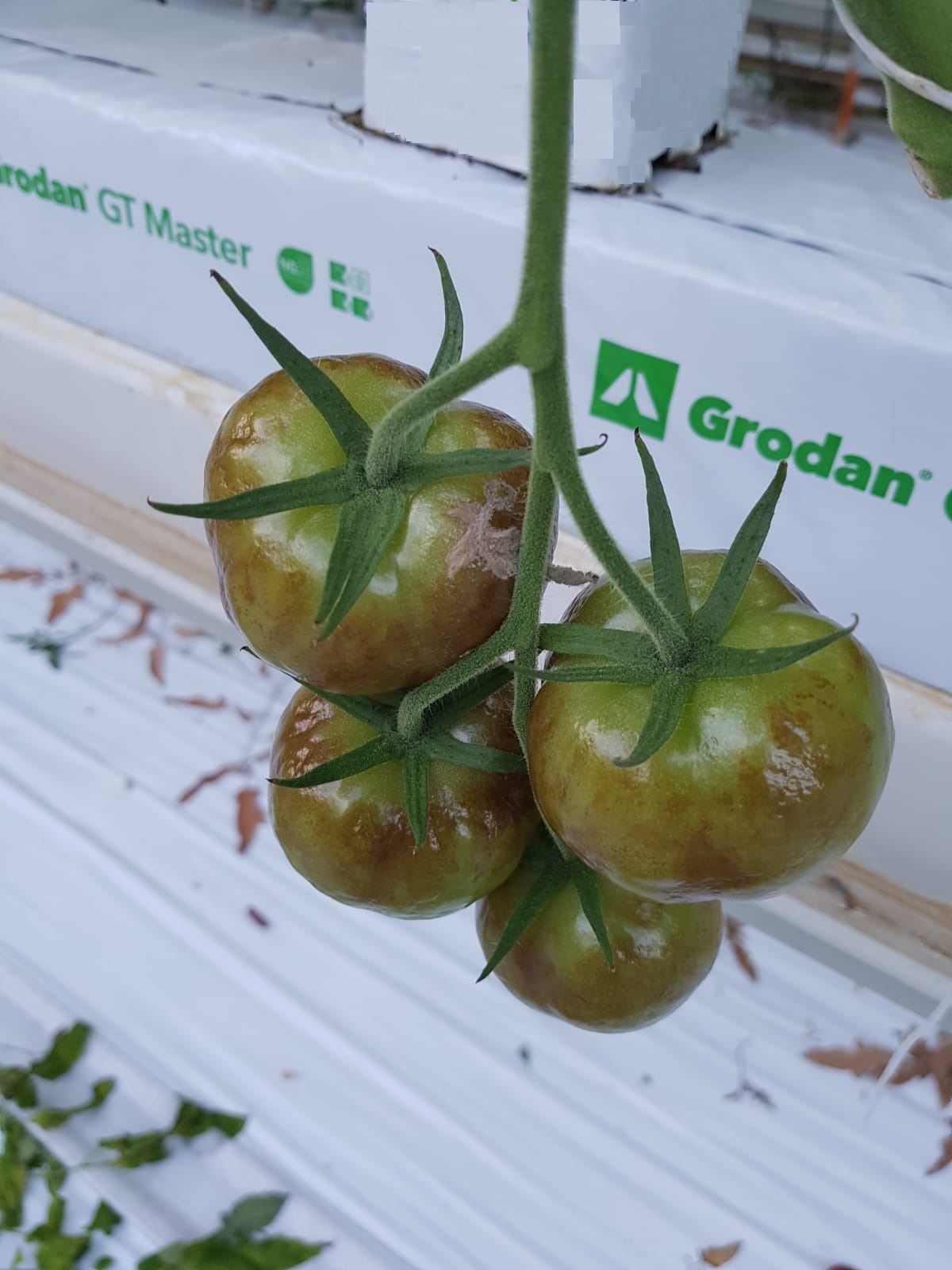Please click here to access the main AHDB website and other sectors.
- Home
- Knowledge library
- The symptoms of tomato brown rugose fruit virus (ToBRFV)
The symptoms of tomato brown rugose fruit virus (ToBRFV)
Learn about how tomato brown rugose fruit virus (ToBRFV) is spread, which plants are susceptible hosts, and the key symptoms to look out for.
Please note this information will not be updated beyond March 2023
Read more about tomato brown rugose fruit virus
What are the main symptoms of ToBRFV?
The virus is named after the characteristic brown wrinkled (rugose) patches, which can develop on fruit of infected plants. However, symptoms of infection can vary with variety and in tomato can include mild to severe mosaic, discolouring on the leaves, with some leaves becoming narrower.
Tomato fruits can be discoloured, misshapen, turning yellow or brown with crinkling of the skin. The virus can readily spread to all plants in a crop. Due to the symptoms, the fruits of infected plants lose market value or are unmarketable.
Common symptoms
- Mosaics (chlorotic or pale patches) develop on younger leaves in the head and side shoots
- Leaves may be crumpled (puckered) and deformed; in some cases, leaves may be narrowed
- Brown (necrotic) streaks may develop on stems
- Fruit can develop chlorotic marbling, which can appear similar to infection with Pepino mosaic virus
- Fruit may develop brown wrinkled (rugose) patches

See our symptoms gallery for more information
Download AHDB’s poster showing common symptoms
Symptoms in sweet pepper
ToBRFV in sweet pepper is less common, but you should remain vigilant for any unusual symptoms in your crop. To view images of symptoms in sweet pepper crops (and further images in tomato crops), visit EPPO’s ToBRFV gallery.
Hosts and spread
Tomato is a major host of ToBRFV, but inoculation trials have demonstrated that sweet pepper (Capsicum annuum) as well as the experimental host plants Nicotiana species, Solanum nigrum, Chenopodium quinoa, Petunia hybrida and Chenopodium murale can act as minor hosts showing slight symptoms.
ToBRFV is a tobamovirus,and is related to tobacco mosaic virus (TMV) and tomato mosaic virus (ToMV). However, the new virus can overcome the Tm-22 resistance gene, which means that TMV- and ToMV-resistant varieties will be susceptible to this new virus (ToBRFV).
Tobamoviruses are stable outside of their host, and the main routes for transmission of ToBRFV are through propagation material (cuttings and grafts) or mechanical means and contact. For example, the movement of virus on:
- Contaminated tools
- Hands and clothing
- Plant-to-plant contact
As with other tobamoviruses, ToBRFV can be transmitted via seed. However, it has only been found on the seed coat, not within the seed. Although transmission of the virus via seed is likely to be rare, it is still important to ensure every precaution is taken and routine testing is carried out where possible.
When an outbreak occurs
Normal glasshouse working practices can quickly spread the virus via movements of contaminated tools and equipment, e.g. during plant cutting, on workers hands and clothing, via picking carts and crates, stringing to trellis ropes, and on glasshouse structures.
It has also been reported that the virus can be transmitted by bumblebees during pollination.
Following an outbreak
The virus could remain viable in leaf debris, seeds or contaminated soil for several months. Once the virus is introduced in an area, potential control measures are very limited and rely mainly on elimination of infected plants and strict hygiene measures. However, many of these hygiene measures can also be used to minimise the risk of entry, spread and impact of this virus.
Useful links
Download Defra’s plant pest factsheet on ToBRFV
Download the EPPO data sheet on ToBRFV
Tomato brown rugose fruit virus: Outbreak management and reporting
Tomato brown rugose fruit virus: Hygiene best practice and biosecurity

